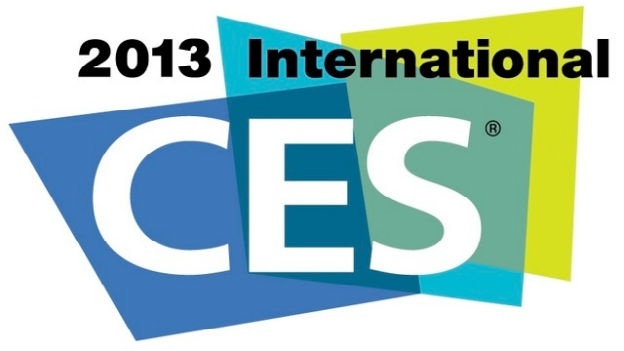Nigel Walley – Jan 2013
 When looking at the coverage of CES its easy to get swept up in the gadgetry on offer – internet connected fridges, bendable phone etc. And that’s just the vaguely normal stuff. But, beyond the hype we think that the TV industry had two serious questions for the tech world at CES: ‘does anything on display have the potential to disrupt the TV distribution landscape’, with all its inefficiencies and commercial wrangling; and ‘do the initiatives on offer bring the potential for more revenues or more costs’? Here’s what we found.
When looking at the coverage of CES its easy to get swept up in the gadgetry on offer – internet connected fridges, bendable phone etc. And that’s just the vaguely normal stuff. But, beyond the hype we think that the TV industry had two serious questions for the tech world at CES: ‘does anything on display have the potential to disrupt the TV distribution landscape’, with all its inefficiencies and commercial wrangling; and ‘do the initiatives on offer bring the potential for more revenues or more costs’? Here’s what we found.
The STB Still Rules!
From the TV industry’s point of view, the most credible and tangible innovations came from the US pay-TV companies that were exhibiting. We saw new types of boxes demonstrated by US pay-TV platforms Comcast, Verizon and Dish Networks (the US equivalent of Virgin, BT Vision and Sky) which had all made the leap to being true ‘home-media servers’.
All three boxes offered a central box supporting a distributed network of mini-boxes and smart device apps. All put PVR capability at the centre of their innovation. In these systems, the central box can supply a full TV service to six other screens in the house, whether full TVs or tablets, using the domestic wireless broadband. To do this, the boxes have six tuners – yes SIX! – double the amount in Virgin Tivo. This means that they can do six things at once. They can stream live channels to all six screens, connect any of the them to the PVR or deliver on-demand programmes, while giving them all full pause, rewind, record PVR capability.
The Dish box did one extra interesting thing. It recorded every prime time show from the four major networks every day, and collated them in a branded part of the PVR it called ‘PrimeTimeAnytime’. Admittedly its being sued for doing it, but the aspiration is interesting – using the PVR to deliver a VOD outcome. Whilst we have yet to see a comparable box in the UK, the implication is that, far from losing control to the ‘smart TV’ world, the set top box world is aggressively competing to ‘own’ the TV viewer on all and every screen in their lives. If we see similar initiatives in the UK it will mean more control of TV viewing around the home for BSkyB and Virgin, not less.
One strange omission from the US set top box world was a backwards EPG or anyway of jumping from the broadcast area directly into programmes in VOD. We were told by an NBC person at the show that Comcast are introducing one but nobody on any of the stands, from any of the companies, even knew what we were talking about. This may be a very UK based innovation, driven by the almost unique catch-up deals driven initially by the BBC.
Not So Smart TV?
The TV industry has been teased for the last few years with the promise that Smart TV concepts could wrest control of TV distribution away from the set top box companies, and in particular, the pay TV ones like Sky and Virgin. Up till now, the ‘smart’ screens have been interesting, but not quite good enough to make a difference. We expected breakthroughs this year. However, it would appear from the models on display this year that, with the exception of Samsung and LG, most device manufacturers had given up on the whole smart TV thing. Toshiba and Panasonic paid lip service to it, showing models that would have been out of date last year. Sony barely mentioned it on their stand, demoing a standard GoogleTV implementation on a Bravia TV.
Even with Samsung and LG, the outcome was mixed. LG showed interfaces that had evolved only slightly from last year, and Samsung introduced their fourth fundamentally different attempt at a smart interface. The overall impression was of a tech format in disarray. What British broadcasters and content owners want to know is whether smart TV can make it simple and cost effective to build apps that give them the widest reach of devices. Up till now its been too expensive to justify. Most people assume that the only way this will happen is for the manufacturers to all adopt the same software. The only credible candidate for this unifying software is Android for TV (or ‘GoogleTV’ as it insists on being called). However, there was very little evidence that this revolution is about to take place. A few token Google /smart TV combos, but nothing that that looked like an industry tidying up its act.
A worrying sign for those of us interested in that kind of thing, was the lack of coherent SmartTV advertising strategy from the industry. This is still too fragmented to make a difference and, in the case of Samsung (who are meant to be leading this area) it felt like it had gone backwards. The ad unit they include in their interface has been dramatically de-powered, now only appearing on 1 out of the 5 panels that make up their new UX. There was nothing here to excite the advertising industry.
Its Big But Not Clever…
Most of the manufacturers were focusing on the size of the screens they can produce, with 85” – 100” the new bragging zone. For most UK consumers, who are constrained by the size of the alcove next to their fire place, this was an irrelevance. They were all celebrating the OLED breakthroughs. Again, this is a tech development that gets lost on the consumer. However, there were two features that need mentioning – 3D and 4K. Contrary to many reports, 3D is not dead – it seems to gets better and cheaper every year. If it wasn’t for the unbelievable LG 3D presentation wall (which we went back to three times), this would now be a hygiene factor that we didn’t need to comment on. So standard in fact that the sunglasses manufacturers now feel confident enough to have filled CES with beautiful, branded 3D glasses that work on any passive 3D TV, in the cinema or in the pub. They expect us all to own our own pair in the way we do sunglasses.
4K, or UltraHD, is more problematic. Every TV manufacturer was demonstrating 4K TVs (so called because they have 4000 pixels horizontally across the screen compared with 1920 for HD), so the consumer screens are here. However, the UK doesn’t have any boxes that can play 4K or any broadcaster currently planning to shoot in it. So how will it get here?
One train of thought is that football will provide the tipping point via the next upgrade of cameras in the Premiership grounds. Sky have already trialled 4K at the Emirates. But that still leaves all the set top boxes around the country that will need changing, and the post production and broadcast networks to be upgraded at great cost.
A second, and more troubling train of thought for the UK TV industry, is that 4K becomes a standard that international players adopt, leaving us behind (as you could uncharitably claim has happened with HD). At CES, Samsung announced a JV with Netflix to introduce 4K movies via a smart TV app. Both Samsung and Netflix have the global scale to warrant the investment. It is also likely that the next Xbox and Playstation consoles, both running Netflix, will bring 4K video into our lounges before the next generation Virgin and Sky boxes are announced.
And So..
So the big message from CES is that, having lost the current round of the connected TV fight to the set top boxes, the Smart TV devices will fight back next year with super HD. Are we about to witness the start of a two tier TV industry more pernicious than the current free vs pay divide? The result is postponed till next year!

